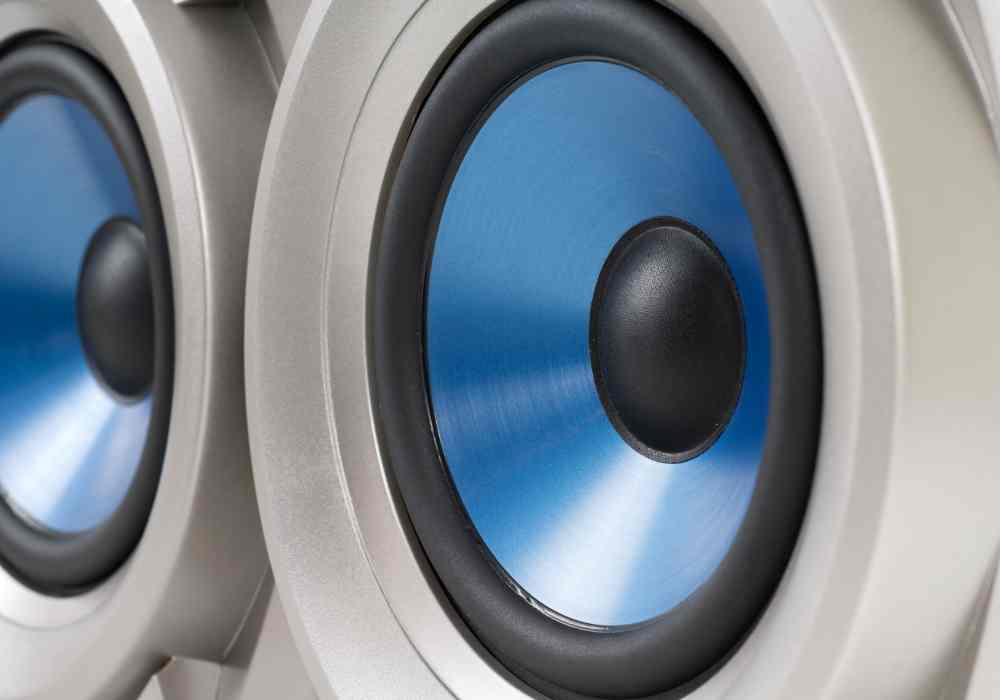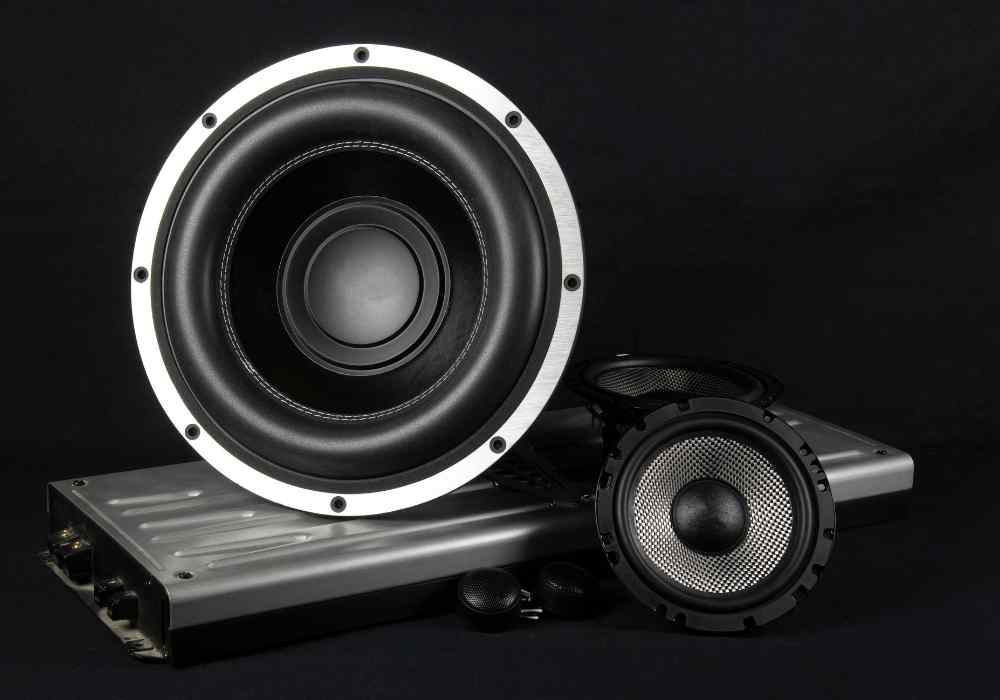Deep bass is an essential component of car audio. It adds a sense of power and energy to music, making it more immersive and enjoyable.
However, achieving deep bass in a car can be challenging due to the limited space and acoustics of a vehicle.

In this article, we’ll discuss the different factors that affect deep bass in car subwoofers and provide detailed instructions on how to achieve deep, powerful bass in your car.
Choosing the Right Subwoofer
The first step in achieving deep bass in a car is to choose the right subwoofer.
There are several factors to consider when selecting a subwoofer, including size, power handling, and frequency response.
Size:
The size of the subwoofer is an important factor to consider.
Larger subwoofers are typically able to produce deeper and more powerful bass than smaller subwoofers.
However, space is limited in a car, so it’s important to choose a subwoofer that will fit in the available space.
Power Handling:
Power handling is the amount of power a subwoofer can handle without getting damaged.

A subwoofer with a higher power handling rating will be able to produce louder and deeper bass than a subwoofer with a lower power handling rating.
Frequency Response:
Frequency response is the range of frequencies a subwoofer can reproduce.
A subwoofer with a lower frequency response will be able to produce deeper bass than a subwoofer with a higher frequency response.
It’s also important to match the subwoofer to the rest of the car audio system.
The subwoofer should be compatible with the amplifier and crossover, and it should be matched to the enclosure for optimal performance.
Enclosure Design
The enclosure is a critical component in achieving deep bass.
An enclosure is essentially a box that houses the subwoofer and controls the movement of air.
There are several types of enclosures, including sealed, ported, and bandpass.
Sealed Enclosures:
Sealed enclosures, also known as acoustic suspension enclosures, are airtight boxes that keep the subwoofer completely sealed.
These enclosures produce tight, accurate bass and are easy to design and build. However, they require more power to produce the same output as a ported or bandpass enclosure.
Ported Enclosures:
Ported enclosures, also known as bass reflex enclosures, have a port (or vent) that allows air to move in and out of the enclosure.
These enclosures produce louder, boomy bass and are more efficient than sealed enclosures.
However, they are more difficult to design and build, and they can be sensitive to the size and shape of the port.
Bandpass Enclosures:
Bandpass enclosures are a combination of sealed and ported enclosures.
They have a sealed inner chamber and a ported outer chamber.
These enclosures produce very loud, deep bass, but they are the most difficult to design and build.
When designing and building an enclosure, it’s important to consider the size, power handling, and frequency response of the subwoofer.
The enclosure should be the right size for the subwoofer and should be designed to optimize the subwoofer’s performance.
Amplifiers and Crossovers
Amplifiers and crossovers are essential components in achieving deep bass in a car.
Amplifiers provide power to the subwoofer, and crossovers divide the audio signal into different frequency ranges.
When choosing an amplifier, it’s important to match the amplifier’s power and impedance to the subwoofer’s power handling and impedance.
It’s also important to consider the amplifier’s frequency response and crossover settings.
Crossovers are devices that divide the audio signal into different frequency ranges.
They allow you to adjust the frequency response of the subwoofer and match it to the rest of the car audio system.
There are several types of crossovers, including low-pass, high-pass, and band-pass.
Low-pass crossovers are used to filter out high frequencies and allow only the low frequencies to pass through.
High-pass crossovers are used to filter out low frequencies and allow only the high frequencies to pass through.
Band-pass crossovers are used to filter out frequencies outside a specific range.
It’s also important to properly adjust the gain, crossover frequency, and other settings on the amplifier and crossover to achieve deep bass.
This can be done by using a frequency analyzer or other tuning tools.
Installation
Proper installation is essential for achieving deep bass in a car.
It’s important to install the subwoofer in the right location and to properly seal and sound deaden the installation area.
The subwoofer should be installed in a location that provides the most airflow, such as the trunk or hatchback.
It’s also important to use the right type of mounting hardware and to properly secure the subwoofer to the enclosure.
It’s also important to properly run power and signal cables.
The power cable should be a minimum of 8 gauge and should be fused within 18 inches of the battery. The signal cable should be a minimum of 18 gauge and should be protected with a RCA ground loop isolator.
Tuning and Fine-Tuning
Tuning and fine-tuning are the final steps in achieving deep bass in a car.
This can be done by using a frequency analyzer or other tuning tools to measure and adjust the subwoofer’s response.
It’s also important to adjust the subwoofer’s phase, crossover, and other settings for deep bass.
This can be done by experimenting with different settings and listening to the results.
Conclusion
Deep bass is an essential component of car audio. It adds a sense of power and energy to music, making it more immersive and enjoyable.
However, achieving deep bass in a car can be challenging due to the limited space and acoustics of a vehicle.
In this article, we’ve discussed the different factors that affect deep bass in car subwoofers and provided detailed instructions on how to achieve deep, powerful bass in your car.
We’ve discussed the importance of choosing the right subwoofer, enclosure design, amplifiers and crossovers, installation and tuning and fine-tuning.
By following the instructions outlined in this article, you should be able to achieve deep, powerful bass in your car.
If you have any additional questions or need further assistance, there are many online resources available to help you troubleshoot and fine-tune your car audio system.
How can I tell if my subwoofer is not performing well and not producing deep bass?
There are several signs that your subwoofer is not performing well and not producing deep bass. One of the most obvious signs is a lack of bass output.
If the bass is not as loud or as deep as it should be, then your subwoofer is not performing well.
Another sign is distortion or clipping. If the bass is distorted or clipped, then your subwoofer is being overdriven and is not performing well.
What is the best type of enclosure for deep bass?
The best type of enclosure for deep bass depends on the subwoofer and the car.
Sealed enclosures produce tight, accurate bass, while ported enclosures produce louder, boomy bass. Bandpass enclosures produce very loud, deep bass. It’s important to choose the right type of enclosure for the subwoofer and the car.
Can I use a subwoofer with a higher power handling than my amplifier?
It is not recommended to use a subwoofer with a higher power handling than your amplifier.
The subwoofer’s power handling rating is the maximum power the subwoofer can handle without getting damaged.
If the amplifier is not powerful enough to drive the subwoofer, then the subwoofer will not perform well and could be damaged.
How do I adjust the phase on my subwoofer?
The phase of a subwoofer is the relationship between the subwoofer and the other speakers in the car audio system.
To adjust the phase on a subwoofer, you will need a frequency analyzer or a test tone generator.
You can adjust the phase by listening to the bass output and adjusting the phase control on the subwoofer or the crossover until the bass sounds the most balanced and deep.
Can I use a home theater subwoofer in my car?
Home theater subwoofers are designed for use in a home theater and may not work well in a car.
Home theater subwoofers are typically larger and more powerful than car subwoofers and are designed to work in a larger room with better acoustics.
Car subwoofers are designed to work in a smaller, enclosed space, such as a car.
If you want to use a home theater subwoofer in your car, you will need to match it to the car audio system and make sure it will fit in the available space.
